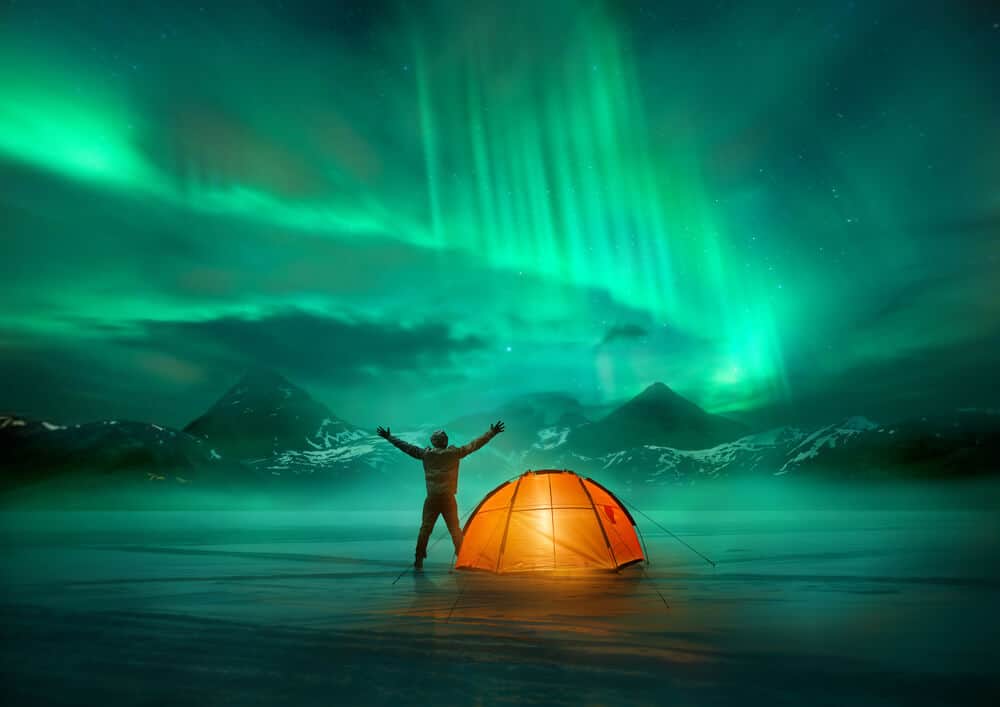Are you planning a trip to Iceland? If so, you’re probably wondering the best time of year to go. More and more travelers have been coming during the fall and winter months. From October to April, you’ll find deals on everything from flights to car rental to hotel accommodations. November is an especially popular time to visit due to the ample number of opportunities to view Iceland’s Northern Lights and partake in outdoor adventure activities such as glacier hikes, ice cave trekking, and glacier cave exploration. So what’s Iceland’s November weather? Should you expect rain, snow, sleet, hail, fog, or all the above? And how many hours of daylight will you have? What about average temperatures? We’ll cover all of this and more as we discuss what to expect weatherwise if you are traveling to Iceland in November.

November Weather in Iceland: Is It Rainy or Snowy?
Iceland has been known to experience multiple seasons in one day, so it’s no surprise that you can expect both rain and snow in Iceland in November. The good news is that this isn’t one of the wettest periods. In months like September and October, it rains 65-70% of the time. That number is greatly reduced in November to just ten days of precipitation during the whole month on average. With around only 3 inches (80 mm) of rain, sleet, snow and other forms of moisture, you’re getting off relatively easy as compared to other times of the year. That being said, you’ll stick need to pack waterproof hiking boots along with a sturdy, high-quality, waterproof rain jacket for those drizzly days. You never know when you might get caught in a rainstorm or a snowstorm.
By now you’ll need to dress well by following the four-layer rule when it comes to packing for your trip.
Practice caution when hiking on uneven terrain (visiting the cave behind Seljalandsfoss for example) as the rocks and other surfaces will be extra slippery at this time of year. You should also know that the South Coast is traditionally the wettest part of Iceland. Most tourists who come to our island spend time driving along the Ring Road in this part of the country, so be prepared for wet conditions.

Average Temperatures in Iceland in November
I know this is the information that you truly came here for. It’s what everyone really wants to know. Just how cold does it get in Iceland in November? Well, I’ve got good news and bad news. The bad news is that it’s pretty cold (it is winter here after all). The good news is that it’s not this extreme, sub-zero, Antarctic turn-into-a-human-popsicle-as-soon-as-you-step-outside frozen tundra that many people conjure up in their heads. Iceland has winter temperatures, pure and simple. It gets much colder in places like Chicago for example. And more good news: with the right clothing, you’ll be amply prepared to face Iceland’s winter. I say throw on some thermal underwear and earmuffs and then bring it on, winter!
As far as numbers, what exactly does the mercury reading on the thermometer say? Well, you should note that these are averages for Reykjavik (the country’s capital). Various factors like what part of the island you visit can have an effect on the temperature. The north is colder that than the south, which makes sense as it touches the Arctic Circle. Reykjavik is in the southwest, and average temperatures are the following:
- Average High in Reykjavik in November: 4-5 ºC (39-41 ºF).
- Average Low in Reykjavik in November: 0-1 ºC (32-34 ºF).
See? It’s not all that bad. Not bikini weather, no. But definitely manageable with the right clothing and preparation beforehand.
Daylight Hours and Sunrise and Sunset Times
This is one of the most important points I want to discuss for November. The change from fall to winter brings a significant shift in the amount of sunshine you experience on a daily basis. The dramatic change sees daylight hours go from a respectable eight hours at the beginning of the month to only five by the end of the month. You’re losing around six minutes per day, and this is something important to keep in mind when planning your daily excursions. Some places are a 30-60 minute walk from where you leave your car. Depending on what time you set out (and return) it could mean the difference between driving at night in icy, snowy conditions and returning home while there’s still daylight.
- November 1st: Sunrise at 9:07 am and Sunset at 5:07 pm (8 hours of daylight)
- November 15th: Sunrise at 9:56 am and Sunset at 4:27 pm (6.5 hours of daylight)
- November 30th: Sunrise at 10:42 am and Sunset at 3:49 pm (5 hours of daylight)
Iceland’s November Weather: Temperatures, Rainfall, and Sunshine
So the secret’s out. Iceland in November gets cold but not so cold that you’ll freeze on the spot if you stay still for too long (although I don’t recommend that either). It’s a great time of year to visit, so why not take advantage of the lower prices and travel deals you can find when you come to Iceland in the winter? Between the Aurora Borealis and exploration of ice caves and glaciers, Iceland has a lot going for it during this period. Iceland’s November weather is not that bad at all! Pack your bags (and some thermal underwear) and get ready for an Icelandic adventure!





